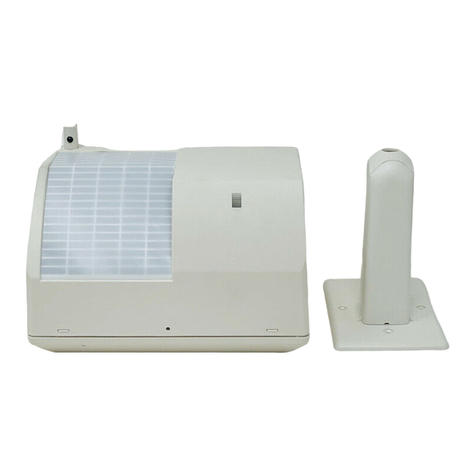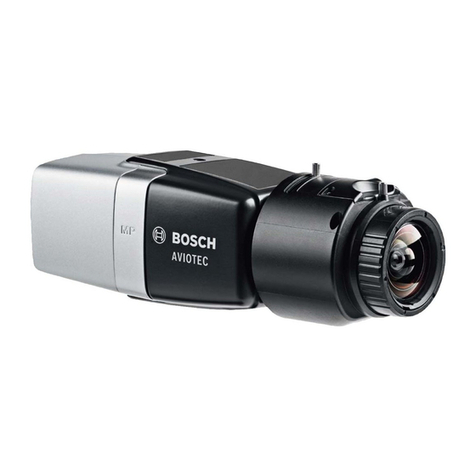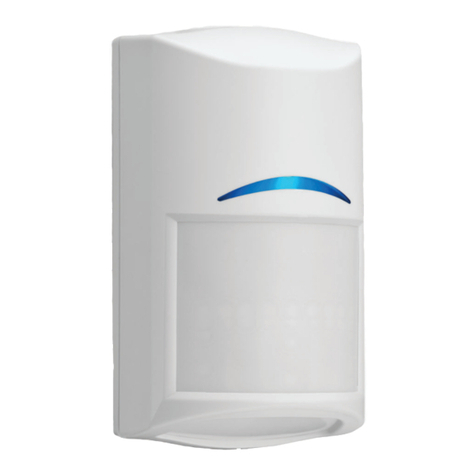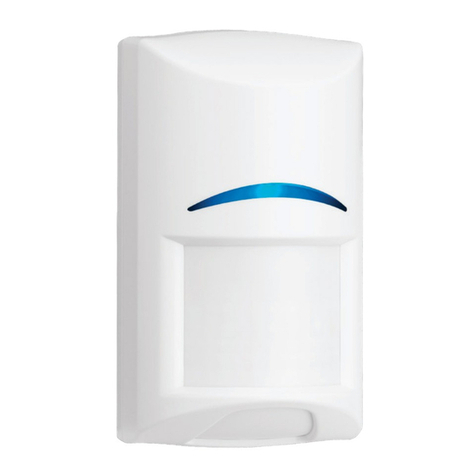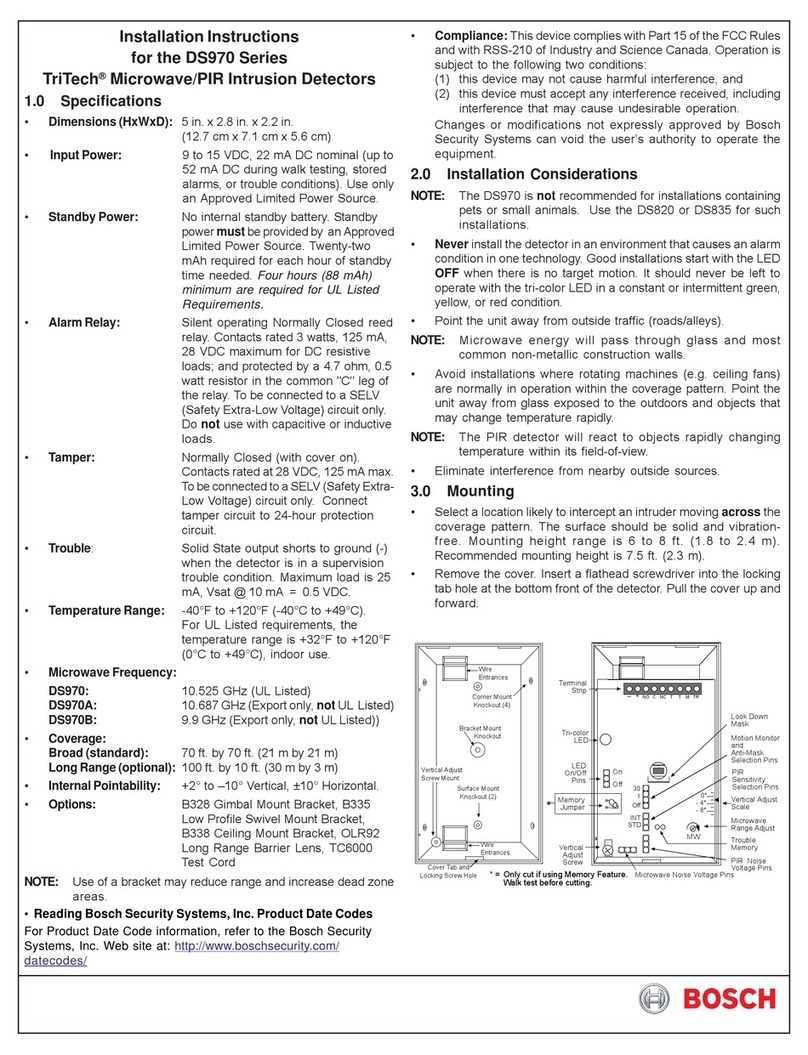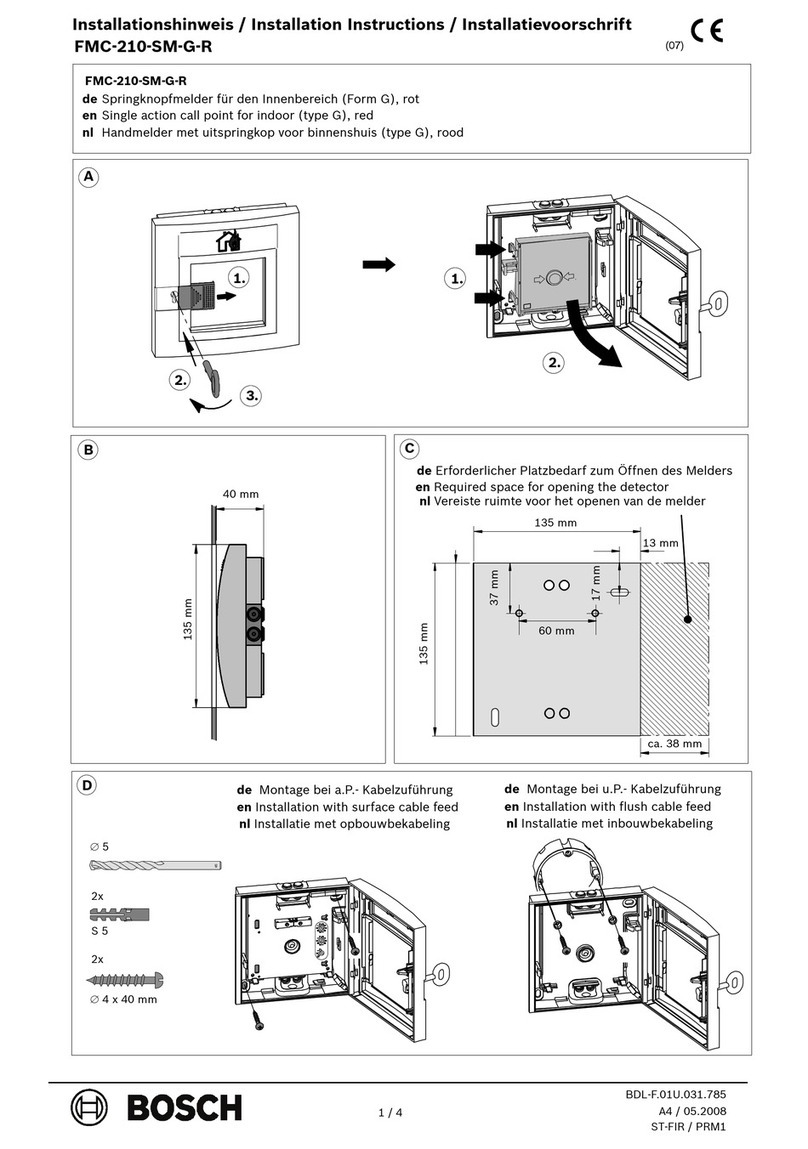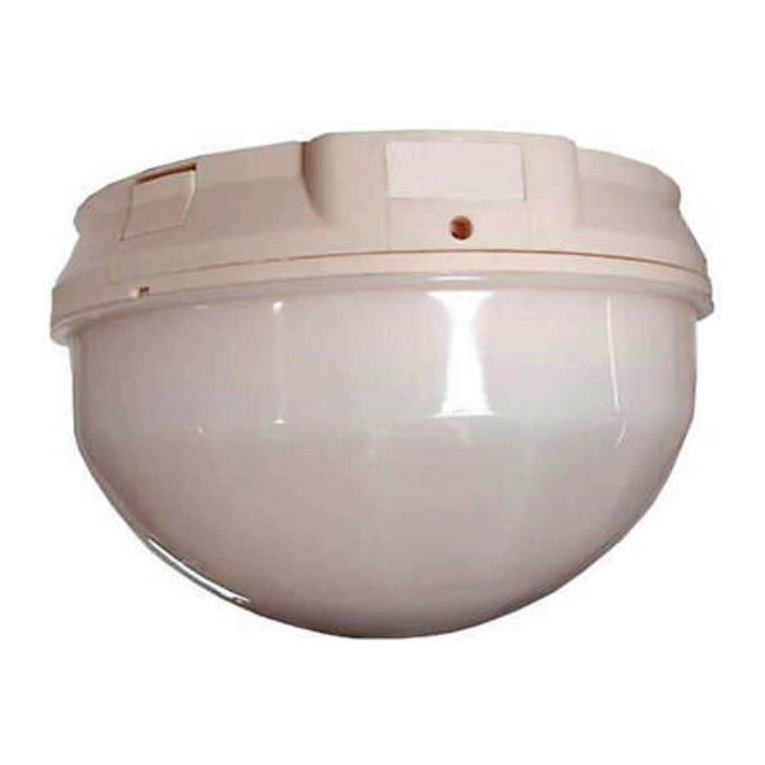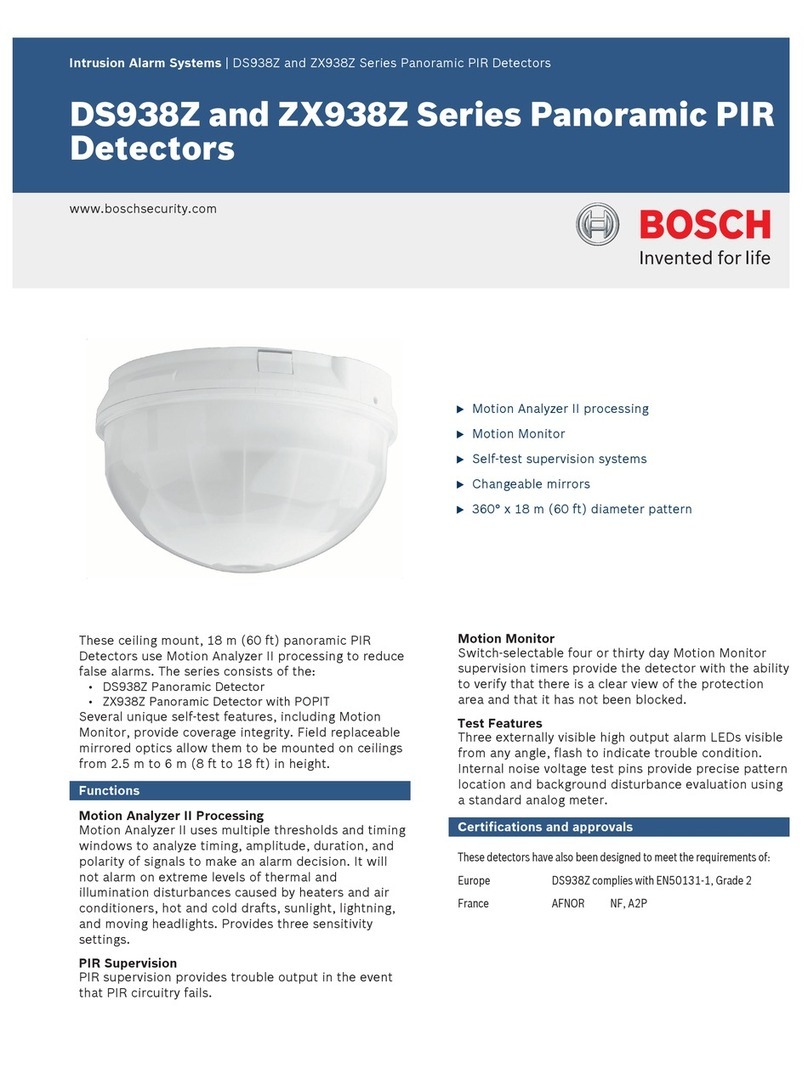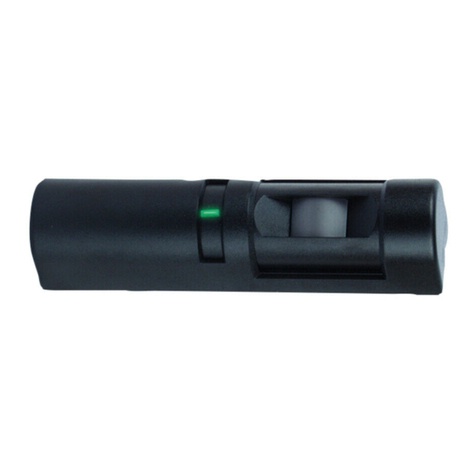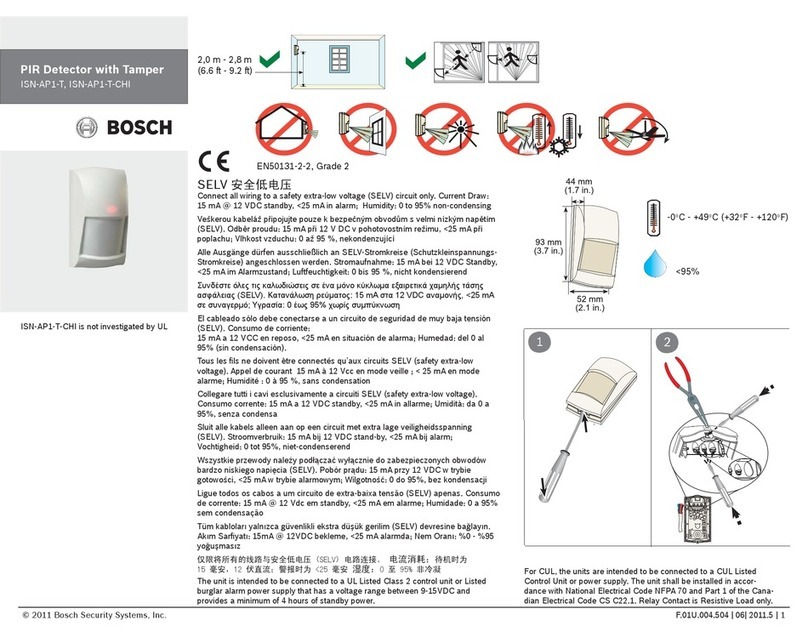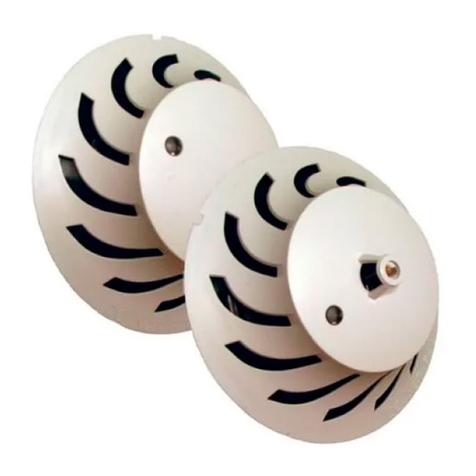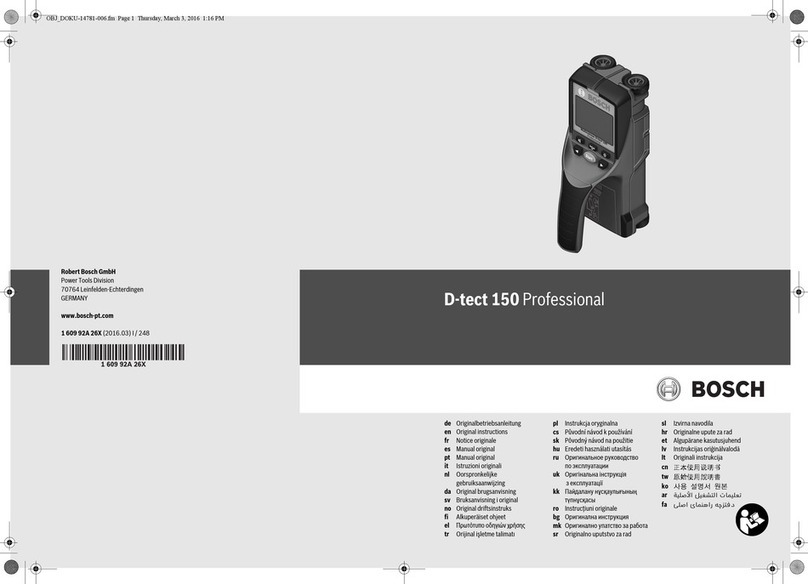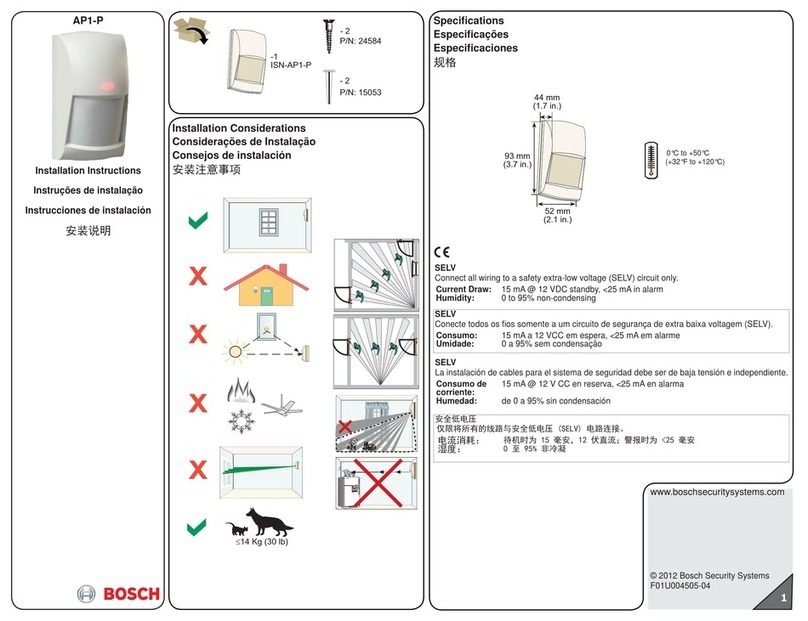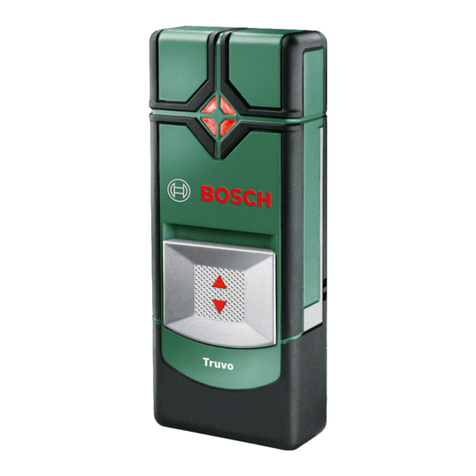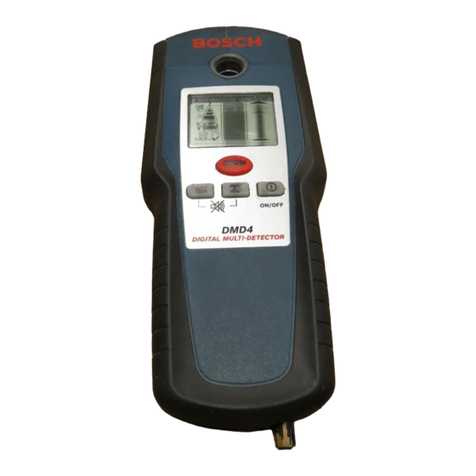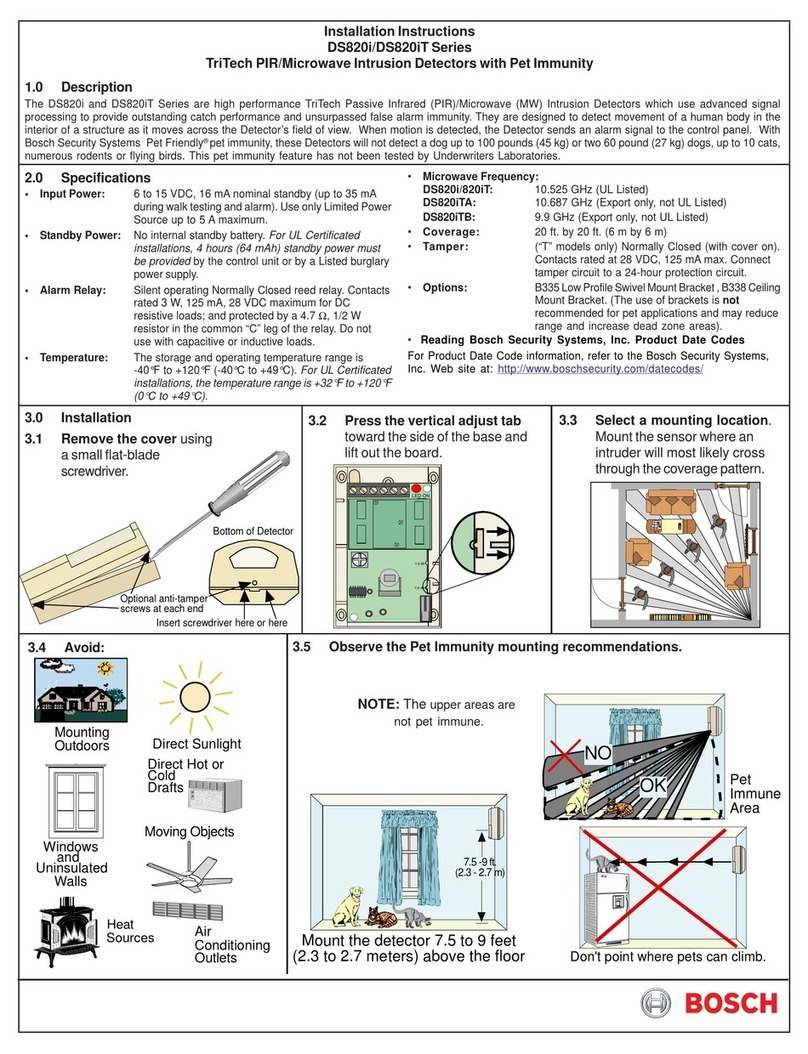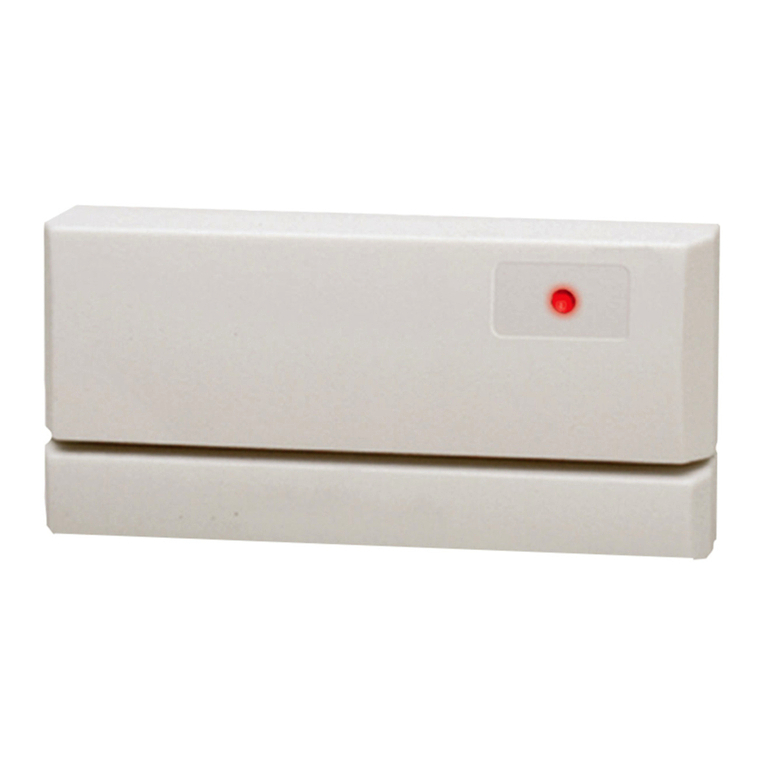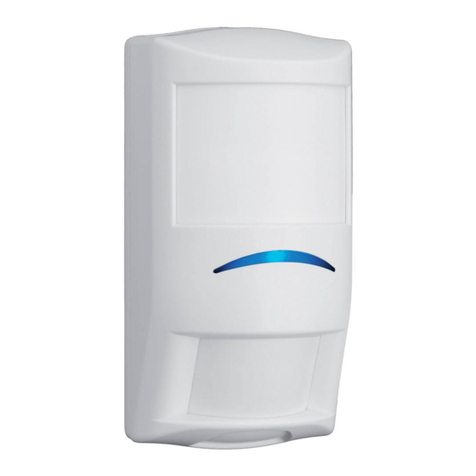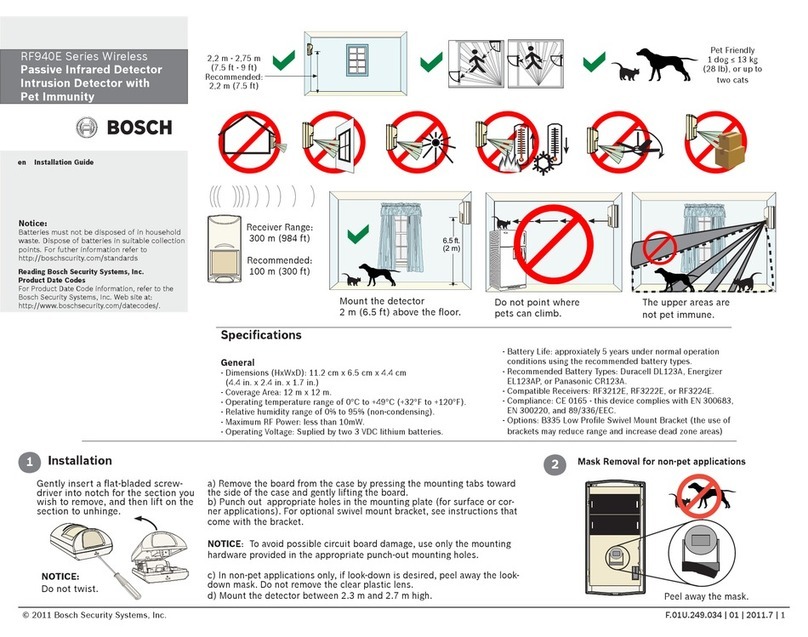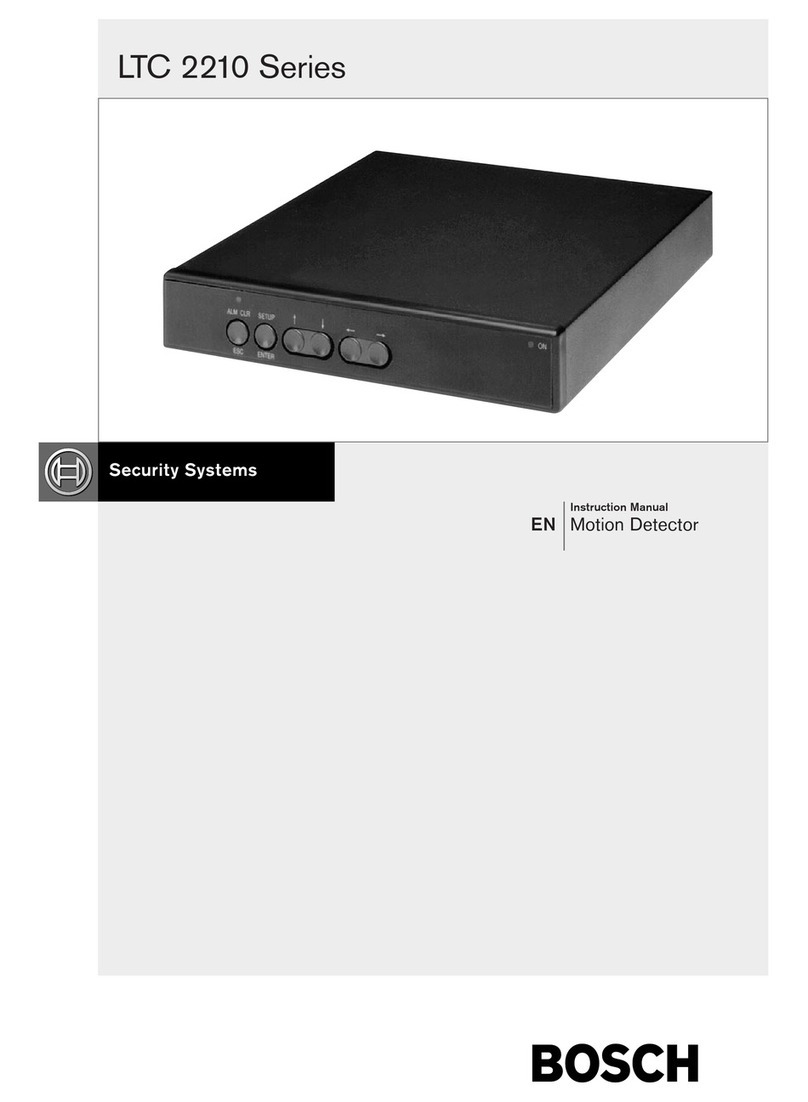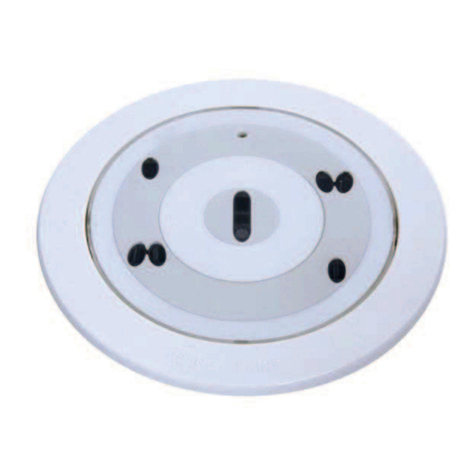
© 2004 Bosch Security Systems
130 Perinton Parkway, Fairport, New York, USA 14450-9199
Customer Service: (800) 289-0096; Technical Support: (888) 886-6189
03/04
RF920 Installation Instructions
P/N: 34520E Page 2
• For installation on drywall or plaster, drill a 1/8-inch (3 mm) pilot
hole to determine if a wall anchor is required.
• Secure the mounting plate to the wall with the wood screws
(#6 x 1-inch) provided.
3.3 Swivel Bracket Mounting
• Using the swivel bracket as a template, mark the location of the
required holes (see Figure D) on the mounting surface.
Surface
Corner
Corner
Surface
Swivel Bracket
Swivel
Ball
Surface Mount
Option Corner Mount
Option
Figure D - Mounting Options and Bracket
• For installation on drywall or plaster, drill a 1/8-inch (3 mm) pilot
hole to determine if a wall anchor is required.
• Secure the swivel bracket to the wall with the wood screws
(#6 x 1-inch) provided.
• Attach the mounting plate to the swivel bracket using the machine
screw (#6 x 5/8-inch) provided.
• Aim the mounting plate in the desired direction and tighten the
screw.
NOTE: The wall tamper switch can not be used when mounting
with the swivel bracket. Use of the swivel bracket may reduce
PIR range and increase dead zones.
3.4 Coverage and Sensitivity Setting
• Remove the sensor’s cover (see Figure A) by gently inserting a
flatblade screwdriver into the notch at the bottom of the cover.
* Adjust the horizontal angle of coverage by sliding the lens (see
Figure C) from side to side.
• Adjust the sensitivity setting by moving the Sensitivity Jumper (see
Figure C) to the appropriate pair of pins.
NOTE: If the sensitivity jumper is not used or placed incorrectly, the
sensor defaults to Intermediate sensitivity.
I
H
Standard sensitivity is recommended for Broad coverage
patterns. This setting is the most tolerant of environmental
extremes.
S
I
H
Intermediate sensitivity should be used for Long Range or
Barrier type lens patterns or for any location where an intruder
is expected to cover only a small portion of the protected
area. This setting tolerates normal environments.
S
I
H
High sensitivity should only be used in quiet environments
where thermal and illumination transients are not anticipated.
This setting has the fastest response to intruder signals.
3.5 Powering Up
• Remove the battery from its protective bag and insert into the battery
holder on the back side of the PIR Base. When installing the battery
it is necessary observe proper polarity or the sensor may not function
correctly.
NOTE: When the battery is installed, wait at least five minutes before
activating the Walk Test Mode.
• Attach the PIR base to the mounting plate and tighten the mounting
plate locking screw.
• Replace the cover, engaging the top first then securing the bottom
latch.
NOTE: For added security, the cover may be locked to the base
latch using the small screw provided. The screw hole in the
bottom of the cover must be knocked out prior to replacing
the cover.
4.0 Panel Programming
See your Control Panel's Reference Guide for
programming information for wireless type
devices. There is an ID sticker located on the
housing. You will need the nine-digit number
from this sticker to program this device into
the system.
5.0 Walk Testing
At least once a year, the range and coverage should be
verified for proper operation. To assure daily operation, the
end user should be instructed to walk through the far end of
the coverage pattern to verify an alarm output prior to arming
the system.
• Press the Walk Test Switch (see Figure C) to start a 90 second
Walk Test Mode. During this Test Mode, any activity in the sensor’s
coverage pattern will cause a transmitted alarm and LED activation.
Each alarm will also extend the Test Mode for an additional 90
seconds.
NOTE: Walk Testing should be done across the coverage pattern.
The edge of the coverage pattern is determined by the first
flash of the LED. This may change slightly depending upon
the sensitivity setting. Walk Test the unit from both directions
to determine the pattern boundaries.
Excessive use of the Walk Test Mode may reduce battery
life. Use only for initial setup and maintenance testing.
• If the rated range cannot be achieved, adjust the pattern up or down
to assure the pattern is not aimed too low or high. The vertical
angle of the pattern may be changed by adjusting the swivel bracket
and/or by moving the circuit board vertical adjustment between
-10° and +2° . Loosen the Vertical Adjust Screw to slide the circuit
board. Moving the board up will angle the pattern downward. Tighten
the Vertical Adjust Screw when positioning is complete. The
detection pattern may also be shifted ±10 degrees horizontally by
rotating the lens left or right to the appropriate marks on the lens
frame.
• While the detector is in the walk test mode, turn on all heating and
air conditioning sources which would normally be active during the
protection period. Stand away from the sensor and outside the
coverage pattern and watch for alarms.
• After setup and tests are completed, and there has been no activity
in the sensor’s coverage pattern for approximately 90 seconds, the
LED will flash to indicate that the Walk Test mode is ending.
NOTE: In the normal operating mode, an alarm can be transmitted
only after three (3) minutes have passed since the previous
alarm. This three-minute lockout time reduces unnecessary
RF transmissions in high traffic areas thereby extending
battery life.
6.0 Coverage Patterns
167770187
167770187
ID Number
036912
Meters
0 10203040
Feet
0 feet
10
20
30
10
20
30
3
6
9
3
6
9
Top View Side View
010 20 30 40Feet
036912
Meters
10 ft. 3 m
0 ft. 0 m
Vertical angle at -6°
7.5 ft. 2.3 m
Broad Coverage -
Standard on the RF920
A-I
J-MN-PQ, R
R
Q
I
J
K
L
M
N
O
P
A
BC
D
E
F
G
H
28881 TOP
Inside View of RF920 Lens
Although generally not required, if masking is
desired, the lens diagram shows the appropriate
areas to be masked. Use an opaque material,
such as masking tape, on the inside of the lens.
ABCDEFGH I
JKLM
NOPQ R
0meters
